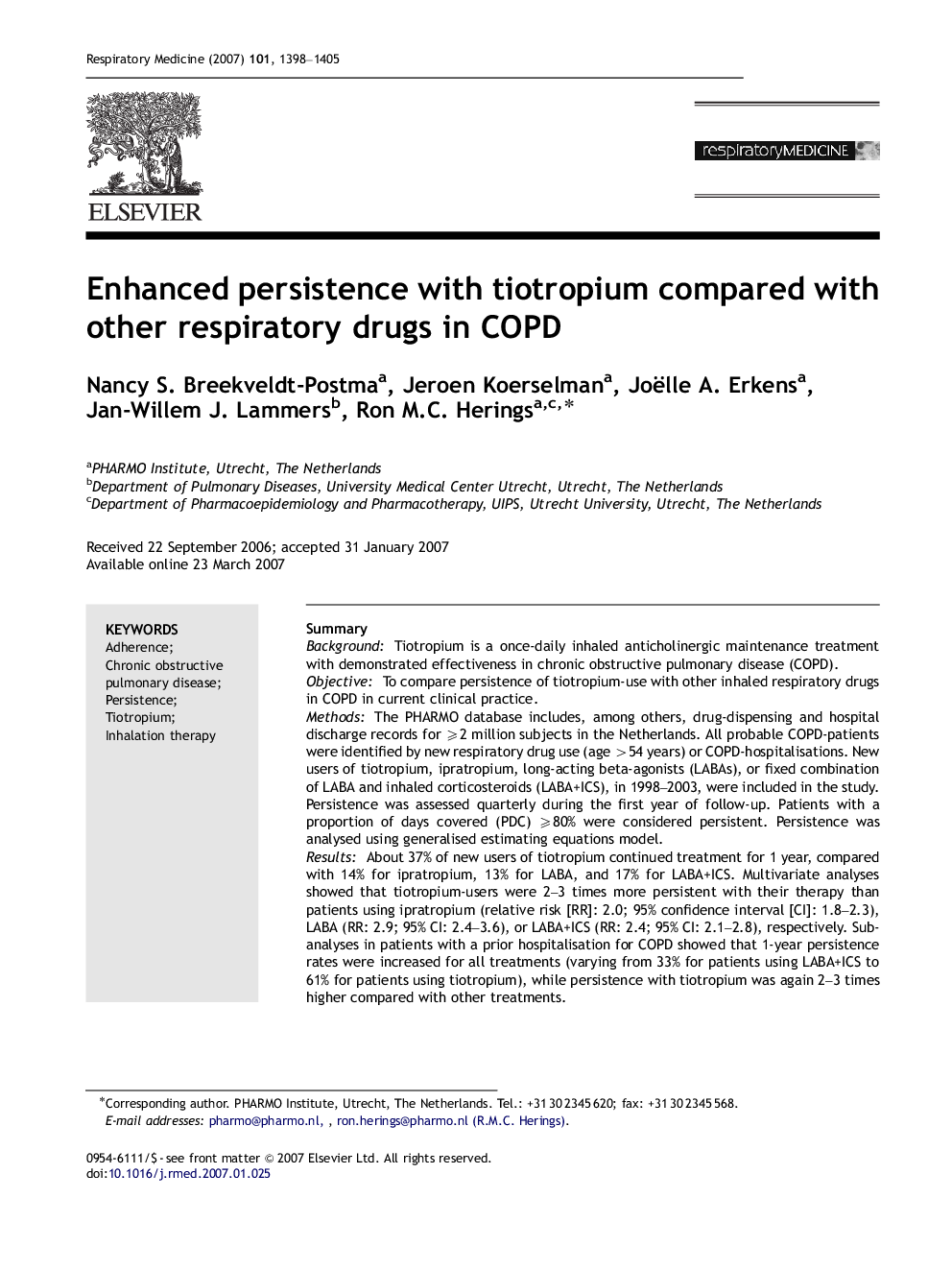| Article ID | Journal | Published Year | Pages | File Type |
|---|---|---|---|---|
| 4211692 | Respiratory Medicine | 2007 | 8 Pages |
SummaryBackgroundTiotropium is a once-daily inhaled anticholinergic maintenance treatment with demonstrated effectiveness in chronic obstructive pulmonary disease (COPD).ObjectiveTo compare persistence of tiotropium-use with other inhaled respiratory drugs in COPD in current clinical practice.MethodsThe PHARMO database includes, among others, drug-dispensing and hospital discharge records for ⩾2 million subjects in the Netherlands. All probable COPD-patients were identified by new respiratory drug use (age >54 years) or COPD-hospitalisations. New users of tiotropium, ipratropium, long-acting beta-agonists (LABAs), or fixed combination of LABA and inhaled corticosteroids (LABA+ICS), in 1998–2003, were included in the study. Persistence was assessed quarterly during the first year of follow-up. Patients with a proportion of days covered (PDC) ⩾80% were considered persistent. Persistence was analysed using generalised estimating equations model.ResultsAbout 37% of new users of tiotropium continued treatment for 1 year, compared with 14% for ipratropium, 13% for LABA, and 17% for LABA+ICS. Multivariate analyses showed that tiotropium-users were 2–3 times more persistent with their therapy than patients using ipratropium (relative risk [RR]: 2.0; 95% confidence interval [CI]: 1.8–2.3), LABA (RR: 2.9; 95% CI: 2.4–3.6), or LABA+ICS (RR: 2.4; 95% CI: 2.1–2.8), respectively. Sub-analyses in patients with a prior hospitalisation for COPD showed that 1-year persistence rates were increased for all treatments (varying from 33% for patients using LABA+ICS to 61% for patients using tiotropium), while persistence with tiotropium was again 2–3 times higher compared with other treatments.ConclusionPersistence with tiotropium was higher compared to other inhaled respiratory drugs in COPD in clinical practice.
